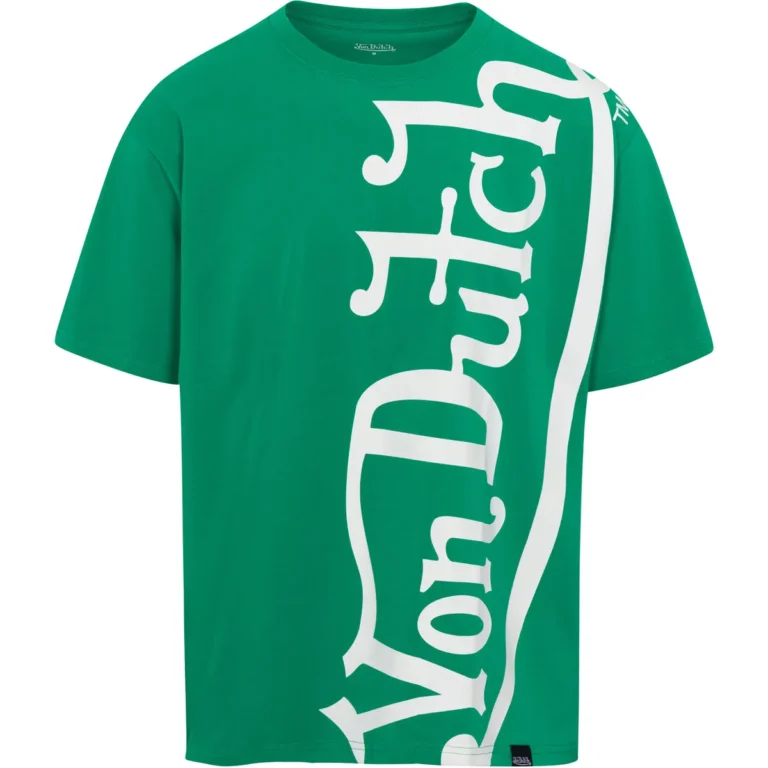The Von Dutch shirt, an insignia of mid 2000s style, is something other than a garment — an image of a social second mixes the universes of Kustom Kulture, big name impact, and streetwear. To comprehend the ascent and enduring allure of the Von Dutch shirt, one should dive into its beginnings, its effect on mainstream society, and its position in the advancing scene of style.
Origins: The Legacy of Kenneth Howard
The narrative of Von Dutch starts with Kenneth Robert Howard, a craftsman and pinstriper whose work during the 1950s and 1960s established the groundwork for what might later become known as Kustom Kulture. Howard, who embraced the nom de plume “Von Dutch,” was eminent for his custom bike plans, complex pinstriping, and novel imaginative vision that blended nonconformist resistance with a profound appreciation for History of the U.S. His work was profoundly compelling in the dragster and bike customization scenes, procuring him a religion like status among devotees.
The Von Dutch brand, laid out in the last part of the 1990s by Michael Cassel and Robert Vaughn, tried to profit by Howard’s heritage by making a line of clothing that mirrored the defiant soul of Kustom Kulture. The brand’s unmistakable flying eyeball logo, a notable plan by Howard, became inseparable from the tense, protester demeanor that Von Dutch addressed.
The Early 2000s: A Pop Culture Explosion
The Von Dutch shirt turned into a mainstream society sensation in the mid 2000s, when big name culture was at its pinnacle, powered by unscripted tv, paparazzi, and the ascent of newspaper media. Big names like Paris Hilton, Justin Timberlake, Britney Lances, and Ashton Kutcher were habitually spotted wearing Von Dutch driver caps and Shirts, catapulting the brand into the standard. The shirts, frequently highlighting strong illustrations, classic propelled plans, and the mark Von Dutch logo, turned into a priority thing for anybody hoping to catch the laid-back, yet insubordinate, energy of the time.
The brand’s allure was attached in its capacity to mix wistfulness with contemporary style. The Von Dutch shirt was not only a garment; it was an assertion — a way for wearers to fall in line with a specific sort of cool, one that was all the while retro and ground breaking. The shirts encapsulated the combination of exemplary Yankee folklore with the lighthearted, superstar driven way of life that characterized the mid 2000s.
The Rise and Fall—and Rise Again
In the same way as other patterns, the ubiquity of Von Dutch Trucker hat encountered a sharp decay as fast as it had risen. By the mid-2000s, the brand was viewed as overexposed, and the mass reception of its once-select plans prompted its transgress in the style world. The brand became related with a past time, and a significant number of the superstars who once supported Von Dutch continued on toward different patterns.
Nonetheless, as of late, there has been a resurgence of interest in Von Dutch, driven by the repetitive idea of design and a reestablished appreciation for Y2K feel. Sentimentality for the mid 2000s, joined with a developing interest in the historical backdrop of streetwear and Kustom Kulture, has brought the Von Dutch shirt once more into the spotlight. Rare Von Dutch pieces are currently pursued by gatherers, and the brand has put forth attempts to once again introduce itself to another age of design lovers.
The Von Dutch Shirt Today: A Cultural Artifact
Today, the Von Dutch shirt remains as a social relic, a sign of a one of a kind crossroads in style history. It addresses the union of craftsmanship, big name, and business, and its story is a demonstration of the force of marking and the persevering through allure of nonconformist style. Whether seen as an image of sentimentality or as a style proclamation by its own doing, the Von Dutch shirt stays a huge piece of the design puzzle, one that proceeds to motivate and incite discussion.
In our current reality where style travel every which way at lightning speed, the Von Dutch shirt has demonstrated that it is something other than a short lived craze. It’s a piece of design history that, similar as the craft of Kenneth Howard himself, proceeds to impact and resound long after its underlying explosion of prominence.

